The Jaggerz’ ‘The Rapper’: You Know What He’s After
by Jeff Tamarkin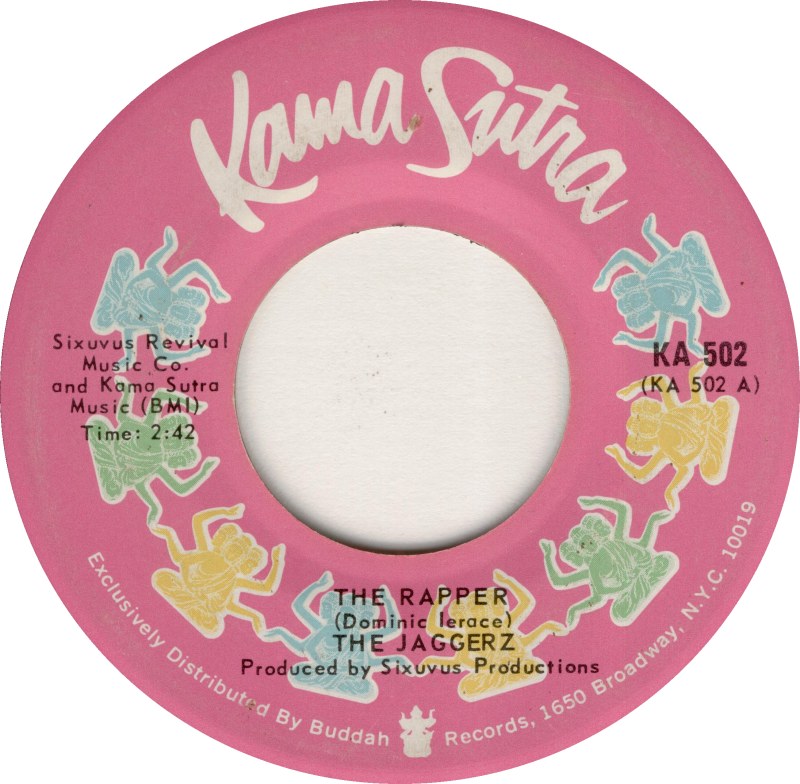 Their name had nothing to do with the Rolling Stones’ singer and their most famous song had nothing to do with hip-hop music—which didn’t quite exist yet, anyway. For a brief moment, they made their mark in rock music, and their signature song is still loved by many today.
Their name had nothing to do with the Rolling Stones’ singer and their most famous song had nothing to do with hip-hop music—which didn’t quite exist yet, anyway. For a brief moment, they made their mark in rock music, and their signature song is still loved by many today.
The Jaggerz’ “The Rapper” rocketed to the #2 spot on the Billboard singles chart in early 1970 and to #1 on the March 21 Record World chart, outpolling the Beatles, Simon and Garfunkel and others.
And then, like so many other so-called one-hit wonders, nothing.
Listen to “The Rapper” by the Jaggerz
The Jaggerz’ roots were with an early ’60s Pittsburgh, Pa., band called the Tri-Vels, led by Dominic Ierace, which later changed its name several times as members left and new ones arrived. By 1964, the then-current lineup became the Jaggers, but although that was the year that saw the Rolling Stones first breaking in America, the British band’s frontman was not the inspiration. The word jagger, it seems, is Pennsylvania slang for a thorny bush, which, for whatever reason, the musicians felt suited their sound.
That sound was primarily in the style that became known as blue-eyed soul, flashy R&B-based tunes with a rocking beat. Changing the spelling to Jaggerz, they signed with the legendary Philadelphia-based production and songwriting team of Kenny Gamble and Leon Huff, who released the band’s debut album, Introducing The Jaggerz, on their own Gamble record label.
When the album flopped, in 1969, the Jaggerz—who were managed by Pittsburgh entrepreneur Joe Rock—left the Gamble and Huff organization and signed with Kama Sutra Records, the label that had enjoyed massive success with the Lovin’ Spoonful a few years earlier. Kama Sutra, piloted by Neil Bogart, a music business visionary who would later navigate the success of acts such as Kiss and Donna Summer, released the Jaggerz’ second LP, We Went to Different Schools Together, which proved the ticket when the Ierace-penned “The Rapper” was pulled from the album and issued as a single in December 1969.
With its spirited, soul-infused rhythm and great performances from the band members–and its brief, unusual section of applause at the end intended to give it a live feel–the song was perfect for AM radio at a time when diversity was in vogue.
Related: 1970, the year in music
It took off quickly in the Pennsylvania market, then spread nationally, kept from the top spot in Billboard only by Simon and Garfunkel’s “Bridge Over Troubled Water.” The Jaggerz’ claim to fame probably wouldn’t fare well in today’s #MeToo era though: it profiled what was then known as a lady’s man, a guy who sweet-talked women with his “rap,” or smooth talking:
“So, he starts his rappin’
Hoping something will happen
He’ll say he needs you
A companion, a girl he can talk to
He’s made up his mind
He needs someone to sock it to”
As the plot thickens, the seduction begins to work:
“He’s made an impression
So he makes a suggestion
‘Come up to my place
For some coffee or tea or me’
He’s got you where he wants you
Girl, you’ve gotta face reality”
And that was that—draw your own conclusion. Said Ierace in an interview posted on Songfacts.com, “The song itself was just something that I wrote watching people in nightclubs, in all the bars that we were playing. You’d see these dudes go over and start rapping to chicks—in those days, we did call it ‘rappin’,’ and they were just basically picking chicks up and hitting on them. That’s how the song came about, just watching these guys and all their moves.”
Despite the song’s rather dated storyline, “The Rapper”—whose chorus simply went, “Rap, rap, rap, they call him the rapper/Rap, rap, rap, you know what he’s after”—caught on. But the Jaggerz didn’t. The album peaked at #62, and although they managed to place a couple more singles into the lower reaches of the chart, their moment was brief: After 1970, they never made it back to the charts. Different lineups of the Jaggerz hung around until 1977, but the key members eventually went their separate ways.
Listen to “I Call My Baby Candy,” the followup single to “The Rapper”
Most successful of those was guitarist/lead vocalist Ierace, who changed his name to Donnie Iris. He joined the group Wild Cherry (“Play That Funky Music”) and then, in 1980, released his debut album with his own band, Donnie Iris and the Cruisers. Iris proved to have more staying power on his own, ultimately sending seven singles into the top 100 between 1980-85, and five albums into the Billboard LPs chart. Donnie Iris (born Feb. 28, 1943) and the Cruisers still perform today.
Meanwhile, the Jaggerz, minus Iris/Ierace, reunited in 1989 and, having gone through several personnel changes, also still exist today, led by original vocalist Jimmie Ross and guitarist Benny Faiella. Both Iris and the Jaggerz still seduce audiences with “The Rapper” whenever they play.
Listen to Donnie Iris perform “The Rapper” live
Related: The #1 singles of 1970

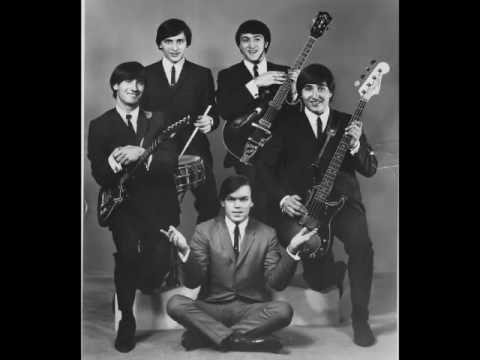
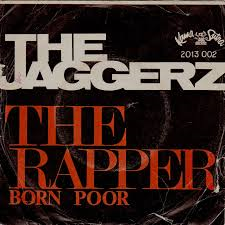
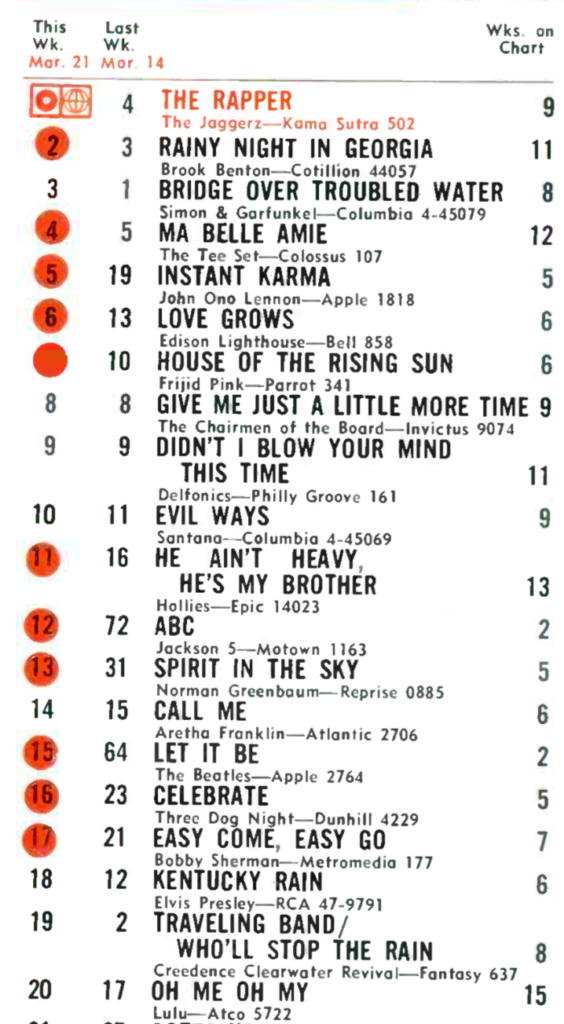

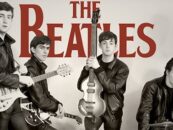
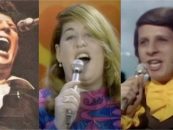


7 Comments so far
Jump into a conversationJeff Tamarkin is a national treasure. Seriously.
Ha, thanks mom!
The follow-up single is actually better!
Dated story line- what guys don’t hit on girls anymore. The song to me sounds like a warning to woman.
Right – I don’t know why the writer thought it wouldn’t fit the MeToo era. On the contrary, it’s very much in line with it. Certainly when compared with all the “you’d better give me sex, baby” songs that were all over the place at the time.
“The Rapper” and “Spirit in the Sky” on the same chart. Good times.
In retrospect, this is kind of a creeper song… “you know what he’s after”… “girl, you’ve got to face reality.”